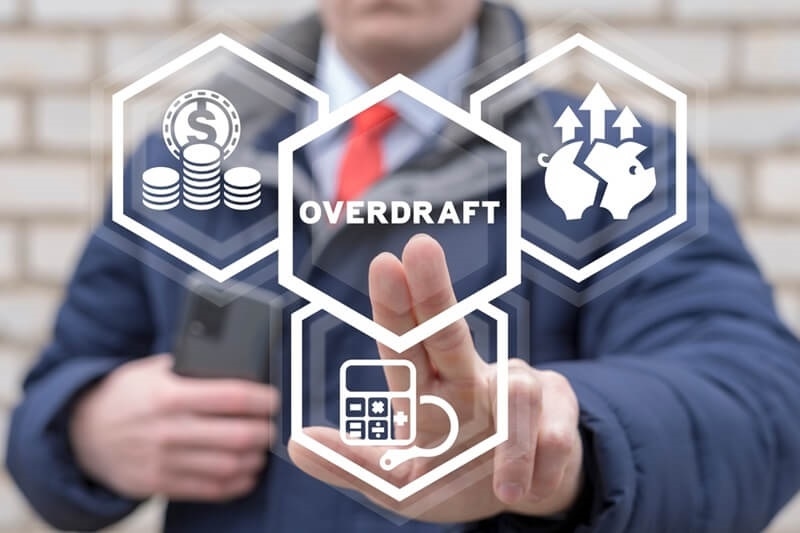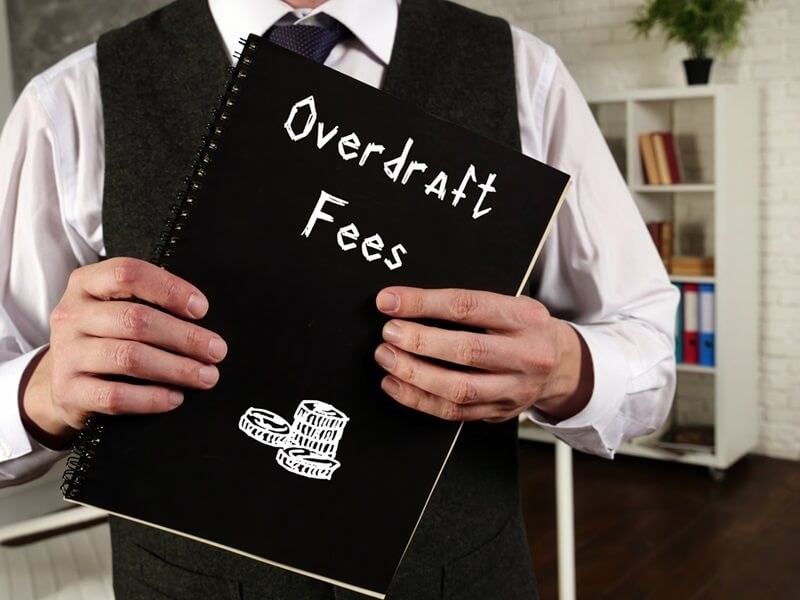A Wise Guide to Avoiding Overdraft Fees Smartly in Future

To most Americans, the most maddening bank fees are overdraft fees. They appear out of nowhere, cause unnecessary anxiety, and always arise when money is tight. The average overdraft fee in the United States is $35, and it doesn't take multiple fees long to strip a checking account of several hundred dollars. With the right combination of financial know-how, technology, and prudent money management, however, it is possible to avoid overdraft fees.
Here, we talk about real methods of avoiding overdraft fees, such as low balance management, useful information on bank account tips, activating budget alerts, and simple methods of coping with low balances. Following these steps, you are able to avoid unnecessary charges and be more confident in everyday finances.
Understanding Overdraft Fees
Overdraft fees are when you spend more money than your account has in it. Instead of declining to make the transaction, most banks cover the deficit but charge you a fee. You also have "extended overdraft fees" from some banks if you don't bring the balance back to the positive column within a few days.
Why are overdraft fees terrible?
Here is why.
- They charge account owners who are already struggling to keep their accounts above zero.
- They accumulate quickly if multiple transactions post on one day.
- They provide nothing of worth other than frustration and lost funds.
Steps for Avoiding Overdraft Fees

Learning how overdrafts work allows you to anticipate and avoid them.
Step 1 - Good Low Balance Management
The first method to avoid overdraft charges is successful low balance management. If your account balance drops low again and again, you're in a risk zone where a minute purchase will trigger fees.
Some simple methods of maintaining low balances under control are:
- Minimum buffer. Establish a personal minimum (e.g., $100) and act as though you're already in overdraft when you drop to that point. This is your psychological buffer that creates room.
- Check daily for your transactions. Relying on your memory is dicey. Small purchases like morning coffee or digital app subscriptions tend to add up. Check your balance at least once a day through your bank's app.
- Separate discretionary spending. If possible, open a second account just for non-essential spending. That way, you’re less likely to dip into funds meant for bills and essentials.
- Deposit early and often. If you’re paid weekly or biweekly, try depositing income as soon as possible to reduce the risk of running a negative balance.
- Developing low balance awareness not only helps with avoiding overdraft fees but also builds long-term financial discipline.
Step 2 - Stay Ahead with Budget Alerts
Low balance alerts or budget reminders at most banks today are done through email or SMS. These are an ounce of prevention against getting you into overdraft fees because they remind you long before you can be overdrawn.
How to make the most of them:
- Set reminder of balance. You can have some banks alert you if your account drops below a figure you have specified, for instance, $200 or $100.
- Allow spending alerts. Be notified whenever a transaction greater than a certain threshold is made so you can identify unwanted spending.
- Watch out for regular payments. Budget reminders can notify you of an upcoming subscription or bill payment so that you can pay in advance.
By putting in place these reminders, you will never miss cutting down on expenditure or transferring money. Budget reminders are likely to be one of the easiest and most effective methods of keeping low funds in line with the least amount of effort.
Step 3 - Use Convenient Bank Account Tips
Your bank of choice and how you keep your account are also key to avoiding overdraft fees. Overdrafts are not treated the same by every bank, and there are some with more user-friendly alternatives that make things less complicated.
These are tried-and-tested banking account tips:
- Opt out of overdraft protection. Banks enroll you automatically in overdraft protection, which covers transactions, but for a fee. If you opt out, transactions will simply be declined if you don't have the cash. It may be less convenient, but it is free of charge.
- Switch to a bank with zero overdraft fees. A few U.S. banks and credit unions have gotten rid of overdraft fees altogether. You can save hundreds of dollars a year by switching to one of them.
- Link your accounts. Most banks will let you link a credit card or savings account to your checking account. In times of low funds, money is transferred automatically rather than being overdrafted.
- Monitor holds on funds. Gas stations, hotels, and car rental agencies sometimes place holds on funds greater than your purchase. Keep an eye out so you don't end up going negative.
These bank account tactics do take some initial effort, but they provide long-term protection against unexpected bills.
Step 4 - Build Daily Money Habits
Being protected from overdraft fees isn't just about reacting to low balances—it's about building money habits that avoid the risk in the first place. Sound daily money habits will keep your money secure even when unexpected expenses pop up.
Workaday habits are:
- Create a financial calendar. Mark bill due dates, rent payments, and subscription renewals so you're not surprised.
- Use direct deposit. Direct deposit of your paycheck saves time and provides you with quicker access to cash.
- Budget weekly, not monthly. Breaking your budget into smaller pieces enables you to more easily handle times of low money.
- Round up your spending. Some apps round up purchases and automatically save the change. This creates a small emergency cushion with minimal extra effort.
By building awareness and structure into your financial routine, you’ll naturally reduce the chance of overdraft situations.
Step 5 - Plan for Managing Low Funds
Despite the best planning, there will be occasions when your finances are low. The trick is to manage low finances proactively and not let things run out of control into fees.
This is how to do it:
- Ration essentials. Pay for housing, utilities, and food first. Non-essential items can wait.
- Use discretionary money. When your balance is low, take out a fixed amount of cash to cover discretionary expenditure. This avoids overspending.
- Use emergency funds. A sufficient emergency fund will save you from a bill payment rather than an overdraft.
- Negotiate with billers. If you're provided with early warning that a payment will cause an overdraft, call the company. Companies will credit you or allow a different payment date.
Keeping low balances on purpose gives you more options and less stress. It also keeps you out of a debt cycle and charges.
Step 6 - Not Paying Unnecessary Extra Bank Fees
Overdraft fees are only one type of fee to be avoided. Most Americans pay the other bank fees like monthly maintenance, ATM withdrawal, and bounced check fees each year. How one avoids paying these fees is part of how to avoid overdraft fees.
Ways of cutting extra bank fees include:
- Maintaining a minimum balance in an account so that fees are not incurred.
- Use only in-network ATMs.
- Choosing online banks that offer fee-free banking.
- Reviewing account statements monthly to spot hidden charges.
By adopting this mindset, you’re not just avoiding overdraft fees—you’re protecting yourself from every type of unnecessary financial penalty.
Step 7 - Build a Cushion
Finally, the best long-term action for avoiding overdraft fees is building money wiggle room. This does not happen overnight, but small actions accumulate over time.
- Build a cushion account. Even $20 per week saved can be a genuine cushion in the future.
- Automate saving. Some banks allow you to automatically transfer small amounts to a savings account with each deposit.
- Seek out and utilize windfalls. Save tax refunds, bonuses, or second jobs to provide some extra security.
A cushion will have you use less balance control on a day-to-day basis and more stability that is steady.
Conclusion
Not wanting to have an overdraft charge on your bill isn't so much about not paying the charge—it's about being more at ease with your money. Through becoming conscious of living in low balances, receiving budget reminders, practicing good bank account strategies, and turning low fund management into better habits, you can completely do away with fear of overdraft fees.
This content was created by AI

